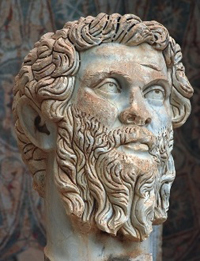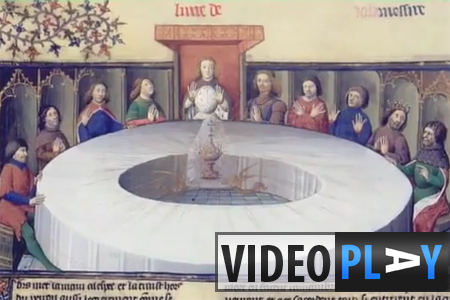 Kashgar has for centuries been a destination for visitors from all over the world. Originally, it was a pivotal point on the ancient Silk Road trading routes, standing at the crossroads of the route linking Kyrgyzstan to Islamabad in Pakistan, and the one heading to modern-day Istanbul and Damascus from the larger Chinese cities to the east.
Kashgar has for centuries been a destination for visitors from all over the world. Originally, it was a pivotal point on the ancient Silk Road trading routes, standing at the crossroads of the route linking Kyrgyzstan to Islamabad in Pakistan, and the one heading to modern-day Istanbul and Damascus from the larger Chinese cities to the east.
Today, a team from the Asia Institute at Australia’s Monash University, working with Chinas Xinjiang Normal University, is hoping to help put Kashgar back on on the traveller’s map this time not as a trade destination, but as a tourist one.
Monash’s Kashgar project team invited John Gollings, one of Australia’s most celebrated photographers, to create a book of photo essays Kashgar: Oasis on Chinas Old Silk Road to help illustrate the vibrancy and colour of one of China’s most important western outposts. It is hoped the book will inspire tourism to the region, and also promote other forms of cultural and economic development.
We caught up with John Gollings to chat about his work photographing Kashgar.
 What fascinates you most about Kashgar?
What fascinates you most about Kashgar?
Its historic connection to the Western world as an entry point to China its remoteness contradicts the knowledge that it was the centre of the ancient world of trade and commerce.
What sets it apart from other Chinese cities?
Its Islamic civic architecture and the medieval mud city itself. It’s rare to be able to visit a living city unchanged for hundreds of years.
How long did you spend there? You shot upwards of 7,000 photos…
The trip was well researched before we left, with categories to be covered, like archeology, architecture, portraits, daily life, religion, and so forth, so it was possible to do in just under three weeks of non-stop shooting and travelling. I had very good local guides, both Han and Uigar, who facilitated local access to houses and mosques.
 Your photos capture remarkably clearly the daily lives of local people. Flicking through the chapter called Merchants and Markets, it is almost possible to hear the vibrancy of the markets and smell the fresh produce and the animals. The markets have always been a lifeblood of Kashgar. Can you tell us a bit about the time you spent shooting this section of the book?
Your photos capture remarkably clearly the daily lives of local people. Flicking through the chapter called Merchants and Markets, it is almost possible to hear the vibrancy of the markets and smell the fresh produce and the animals. The markets have always been a lifeblood of Kashgar. Can you tell us a bit about the time you spent shooting this section of the book?
The area is remarkably fertile and trading is the lifeblood of Kashgar, so the markets are extensive this made it easy to find material. However I shot a lot of images of each area, and I was constantly looking for compositions that had their own power and sense of balance. I tend to use either very long lenses or very wide angle as a way of quickly building a narrative into the image. I believe a well composed image gives credibility to the story and sets it apart from a gratuitously attractive snapshot.
Animals feature prominently in your photos particularly working animals like donkeys, camels and horses. Was this deliberate?
It was deliberate, but only because the animals are central to the life of the place and I was struck by the sense of equivalence to the Western world: the donkey is the family sedan, the camel is the tractor, and the horse is the semi-trailer! The animal as the automobile is as pervasive as the car in the West and as normal.
You also go inside people’s homes, into mosques, shrines and other private places. How difficult was it to secure access and gain the trust of the people?
We asked permission, worked quickly, didn’t rearrange anything, accepted hospitality and respected traditions as the local guides explained them. However, it was generallyspontaneous, occasionally a call had been made the day before to make a time, but most people were much more open and generous than in the West, and less suspicious of our motives.
 Can you tell us a bit about your time in the Old City?
Can you tell us a bit about your time in the Old City?
The architecture of the Old City is a mix of English ‘colonial’, eclectic Victoriana, with the mud brick style of oasis cities around the world. It’s simple and pragmatic, with narrow streets and a close community spirit. It is unique and timeless, and to the visitor the thrill is the time travel back some 500 years a priceless education. The Chinese are all for ‘modernisation’, some buildings are being pulled down to make freeways and roads, other parts because the Chinese fear the Old City is a breeding ground for terrorists. Equally, the locals don’t want to live in a museum without urban services like sewerage, water and power, and they don’t understand the tourist potential or the cultural value of their own city, so it is very threatened by both Uigar and Han.

The area surrounding Mauri Tim appears desolate and vast in your photos almost eerie…
It’s a moonscape and cold and empty, especially in winter. It is so rugged one can only have respect for the inhabitants and their integration with nature and its forces. It also explains the very fatty diet which keeps them warm.
The Grotto of the Three Immortal Buddhas is also vast …
Equally true of the landscape, but the religious plurality is emphasised as you travel across the mountains.
Sites like Mauri Tim and the Grotto of the Three Immortal Buddhas are little known outside archaeological circles, and much of the area is yet to be properly excavated. Can you see this changing?
Monash University are pushing hard to change this but it is physically and politically frustrating. It will be slow!
 Kashgar was the scene of a terrorist attack during the Olympics what impact has this had on the city and its spirit?
Kashgar was the scene of a terrorist attack during the Olympics what impact has this had on the city and its spirit?
And the recent riots as well! It is devastating and divisive and has set back the integration many years. There are moral, ethical and geo-political issues of nationalism and economic imperatives that are hard to resolve happily. It had seemed to exist as a mutually profitable detente between Uigar and Han, but there is much more suspicion now.
What do you hope this book achieves?
More outside knowledge of the area and some greater tourism, which would reinforce local pride and respect for protecting their own culture.
Finally, you have travelled to and worked in many other ancient cities. What have been some of your favourites?
I’ve done a lot of work in India and Cambodia, documenting imperial cities of the 1st millennia, in particular Vijayanagara and Angkor Wat which are both now world heritage sites.
All images by John Gollings, and reproduced from Kashgar: Oasis on Chinas Old Silk Road



